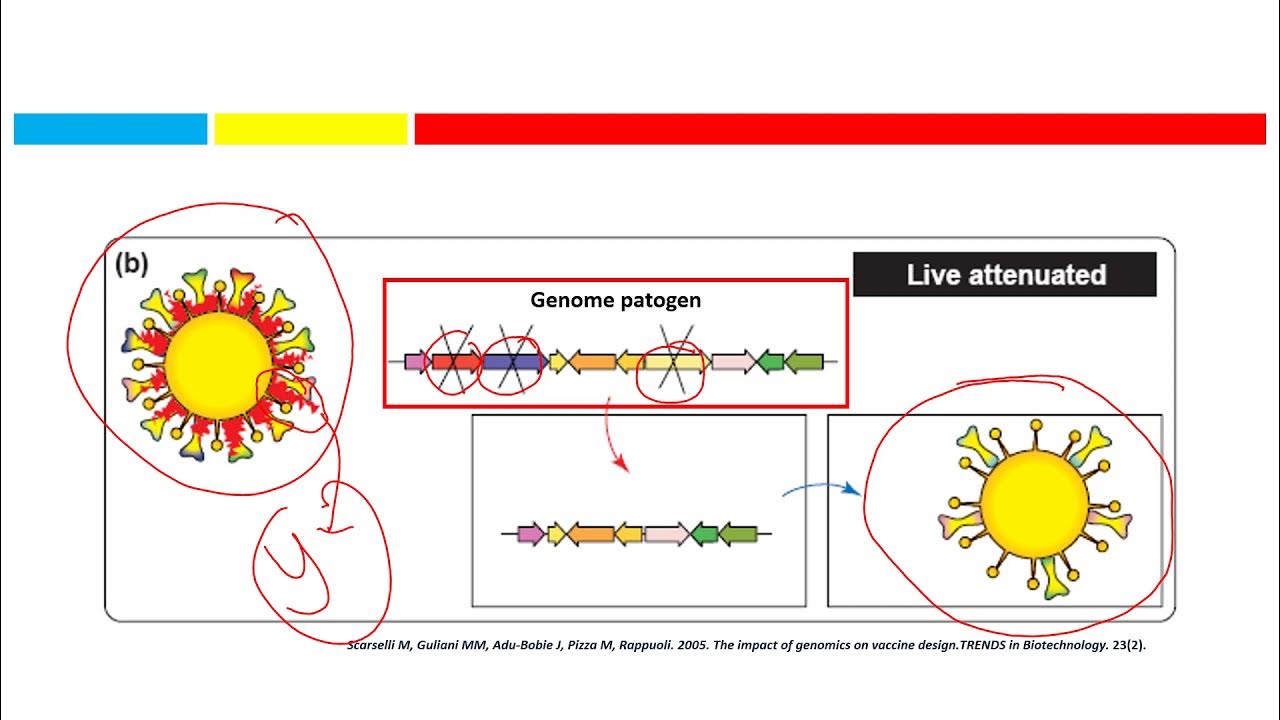Presentasi Mikrobiologi Farmasi Quality Control (QC) kelompok 2 FA22-2
Summary
TLDRThis presentation discusses the quality control processes involved in developing and testing the rotavirus vaccine. It covers the purpose of quality control (QC), which ensures compliance with standards and procedures in vaccine production. Key topics include critical limits in vaccine production, the importance of Good Laboratory Practice (GLP), and detailed testing procedures such as physical, sterility, and stability evaluations. The tests ensure the vaccine's safety, potency, and long-term effectiveness, with specific focus on freezing methods and storage conditions that maintain vaccine viability. Overall, the presentation highlights the importance of rigorous testing and regulatory compliance in vaccine development.
Takeaways
- 😀 Quality control (QC) is a process designed to evaluate testing procedures, minimize deviations, and identify their sources to ensure consistent and reliable results in vaccine production.
- 😀 The main goal of QC is to ensure production processes align with established SOPs, GMP standards, and regulatory requirements to guarantee the quality and safety of pharmaceutical products.
- 😀 QC activities include the inspection of raw materials, packaging materials, intermediate products, finished products, and monitoring of production processes.
- 😀 Identifying critical control points (CCPs) is vital in the production of rotavirus vaccines, with parameters such as temperature, humidity, pH, and appearance being closely monitored.
- 😀 The sampling method involves determining objectives, populations, data types, sampling techniques, sample sizes, and the selection of samples during production processes.
- 😀 Good Laboratory Practice (GLP) ensures the reliability and reproducibility of testing data, protecting both human and animal health while ensuring compliance with regulations.
- 😀 GLP covers essential elements such as laboratory work procedures, staff training, data management, and proper documentation, which all contribute to ensuring valid testing outcomes.
- 😀 The principle of GLP is to enhance the quality of test data, avoid repetitive testing, and streamline the process to improve overall research efficiency.
- 😀 Vaccine evaluation includes physical tests (e.g., volume, color, foreign particles), sterility tests, and stability tests to ensure that formulations are safe and effective over time.
- 😀 Sterility testing ensures that vaccines are free from microbial contamination, using media like Fluid Thioglycollate Medium (FTM) and Sabouraud Dextrose Medium (SCDM) to identify bacterial and fungal growth.
- 😀 Stability testing involves monitoring vaccine candidates under different freezing techniques to evaluate the viability and consistency of the vaccine's potency during storage at various temperatures.
- 😀 Results from stability tests show that freezing methods at -70°C and using liquid nitrogen effectively preserve the potency of the rotavirus vaccine, whereas temperatures around 2-8°C resulted in lower potency.
Q & A
What is the purpose of quality control (QC) in the context of rotavirus vaccine production?
-The purpose of quality control (QC) is to ensure that the production process of the rotavirus vaccine follows standard operating procedures (SOPs) and Good Manufacturing Practices (GMP). It includes testing raw materials, in-process products, and final products to minimize deviations and ensure consistent quality and safety.
What are some key activities involved in quality control for the rotavirus vaccine?
-Key activities include inspecting raw materials, packaging materials, intermediate products, finished products, and monitoring the production process to ensure compliance with quality standards.
What is meant by 'critical points' in vaccine production, and how are they determined?
-Critical points refer to specific limits or parameters (e.g., temperature, humidity, pH) that must be carefully monitored to ensure the vaccine's quality. These limits are determined and validated based on scientific criteria to prevent deviations in the production process.
What is GLP (Good Laboratory Practice) and why is it important in the production of rotavirus vaccines?
-Good Laboratory Practice (GLP) ensures that testing and laboratory procedures are consistent, reliable, and reproducible. It helps maintain quality and safety in pharmaceutical products, including vaccines, by ensuring that data collected during testing is trustworthy and complies with regulatory standards.
How is sterility testing performed on the rotavirus vaccine candidates?
-Sterility testing involves inoculating vaccine samples into specific media and incubating them to detect microbial growth. The vaccine is considered sterile if no microbial contamination is observed after the incubation period.
What are the different types of media used in sterility testing of the rotavirus vaccine?
-The media used for sterility testing include Fluid Thioglycollate Medium (FTM), which is suitable for anaerobic bacteria, and Soybean Casein Digest Medium (SCDM), which supports the growth of bacteria and fungi.
What is the role of stability testing in vaccine production?
-Stability testing ensures that the vaccine maintains its efficacy and safety over time, particularly under various storage conditions. It involves evaluating the vaccine's ability to retain its potency after exposure to different freezing techniques and storage temperatures.
What freezing techniques were tested for the rotavirus vaccine, and which one showed the best results?
-Three freezing techniques were tested: freezing at -70°C, at -12°C, and using liquid nitrogen. The -70°C freezing and liquid nitrogen techniques yielded the best results, preserving the vaccine's potency and viability.
What factors are important when performing physical testing on the rotavirus vaccine candidate?
-Physical testing includes evaluating the volume, color, presence of foreign particles, and homogeneity of the vaccine solution. It ensures that the vaccine meets physical characteristics and is free from defects or impurities.
What were the findings from the stability testing of the rotavirus vaccine candidate at various storage temperatures?
-The stability testing showed that the rotavirus vaccine maintained its potency at temperatures of -70°C and -12°C. However, storage at 2-8°C resulted in a significant reduction in vaccine potency, highlighting the importance of proper storage conditions.
Outlines

هذا القسم متوفر فقط للمشتركين. يرجى الترقية للوصول إلى هذه الميزة.
قم بالترقية الآنMindmap

هذا القسم متوفر فقط للمشتركين. يرجى الترقية للوصول إلى هذه الميزة.
قم بالترقية الآنKeywords

هذا القسم متوفر فقط للمشتركين. يرجى الترقية للوصول إلى هذه الميزة.
قم بالترقية الآنHighlights

هذا القسم متوفر فقط للمشتركين. يرجى الترقية للوصول إلى هذه الميزة.
قم بالترقية الآنTranscripts

هذا القسم متوفر فقط للمشتركين. يرجى الترقية للوصول إلى هذه الميزة.
قم بالترقية الآن5.0 / 5 (0 votes)






